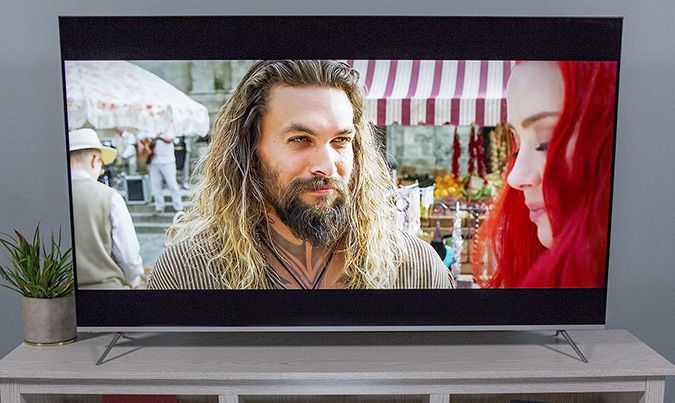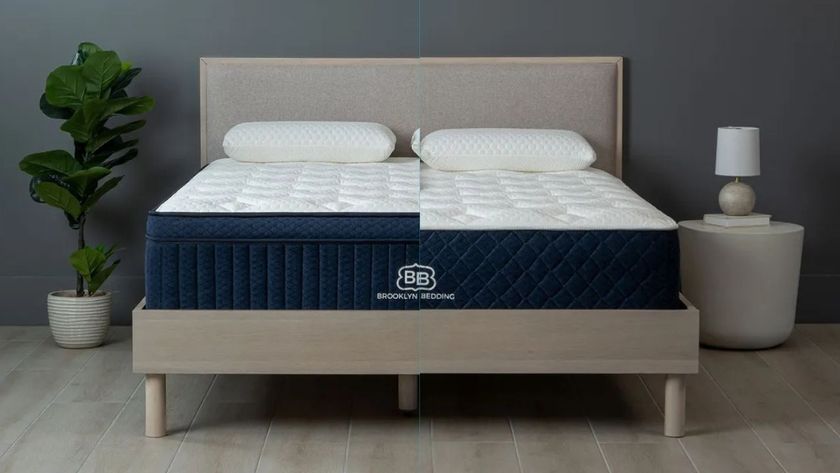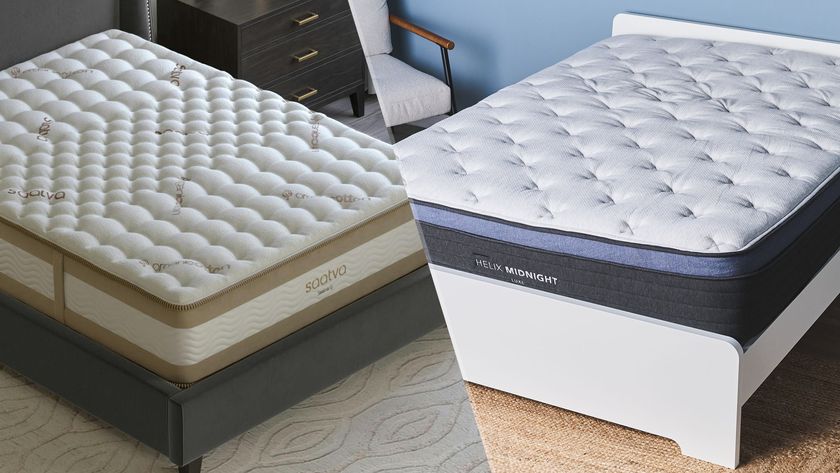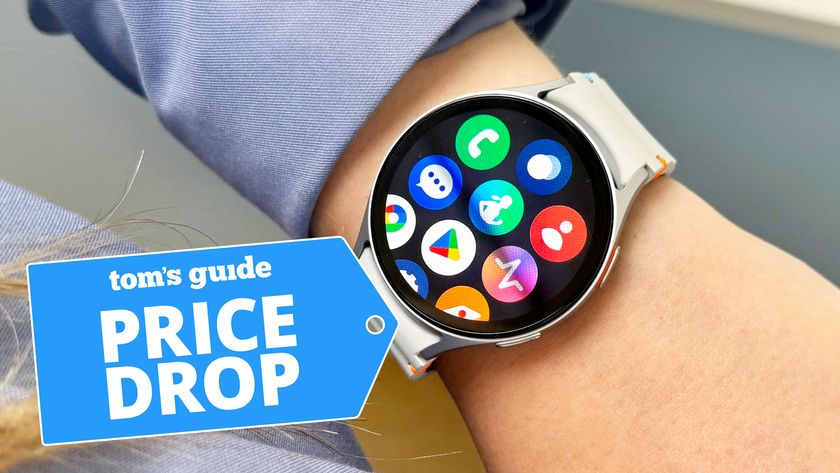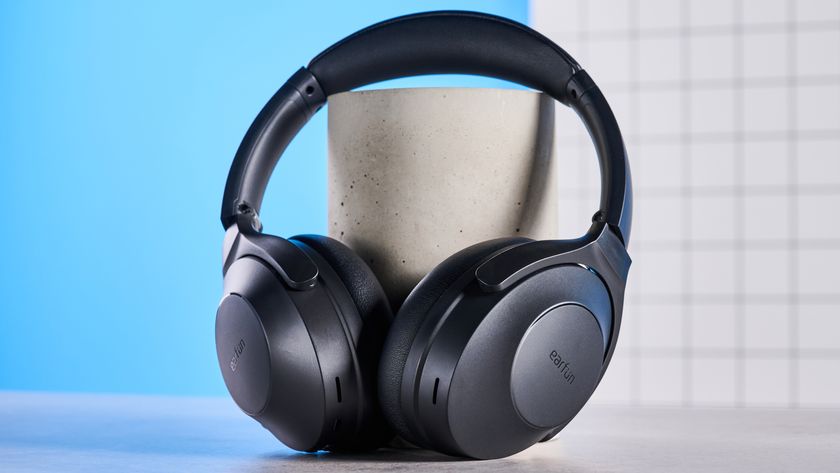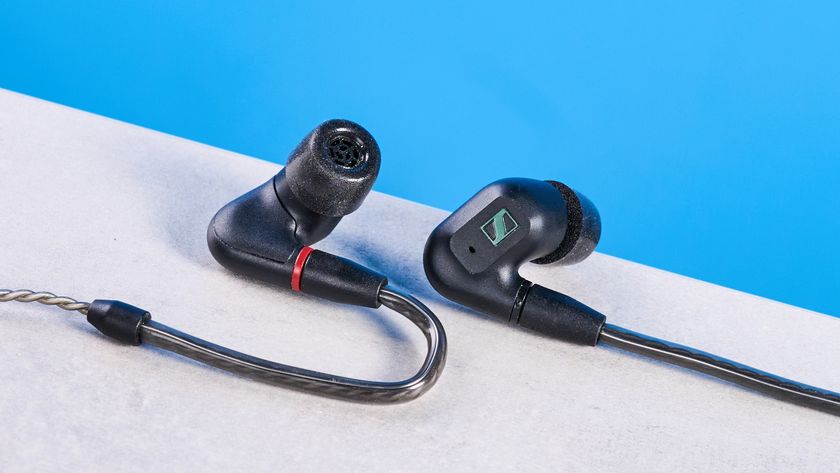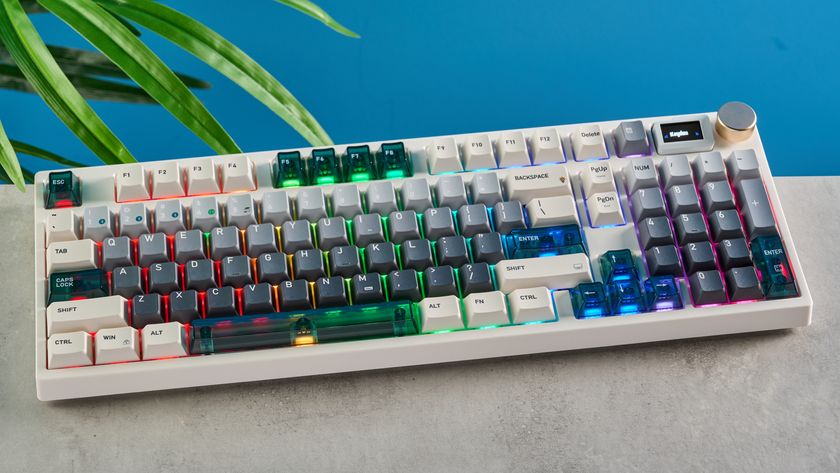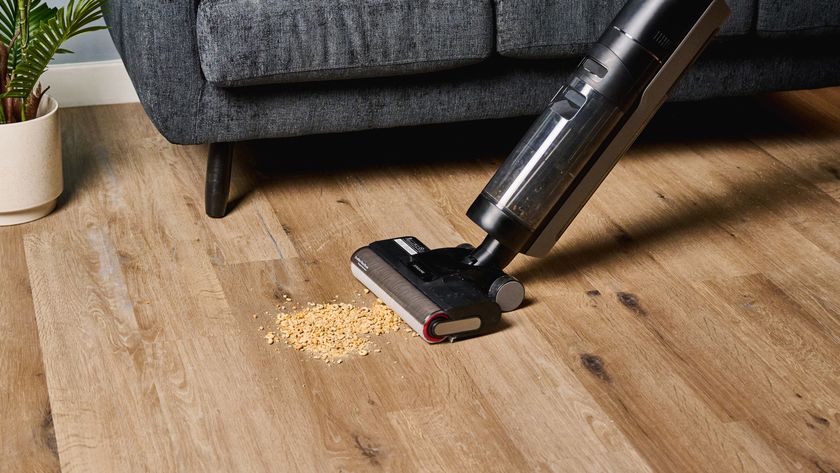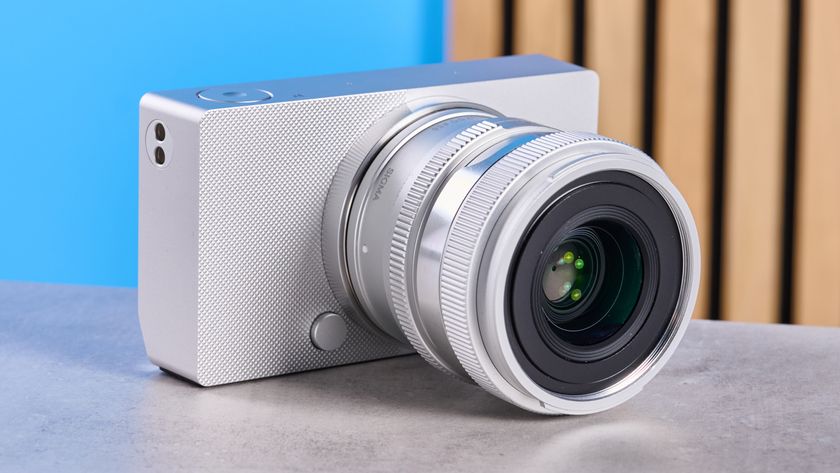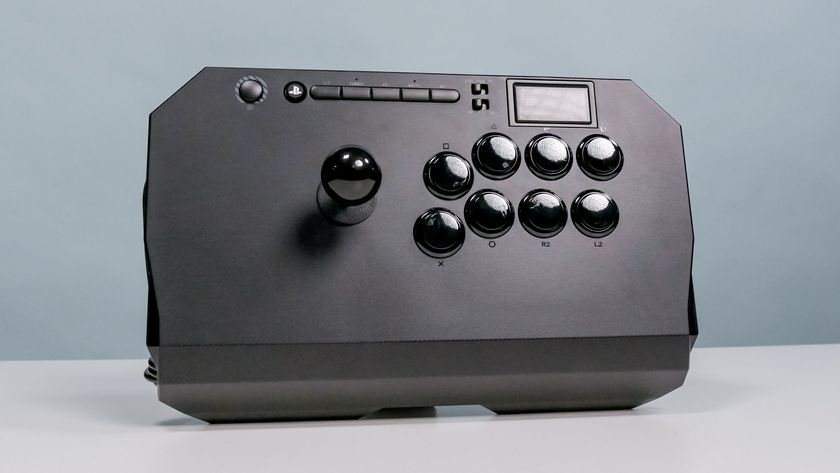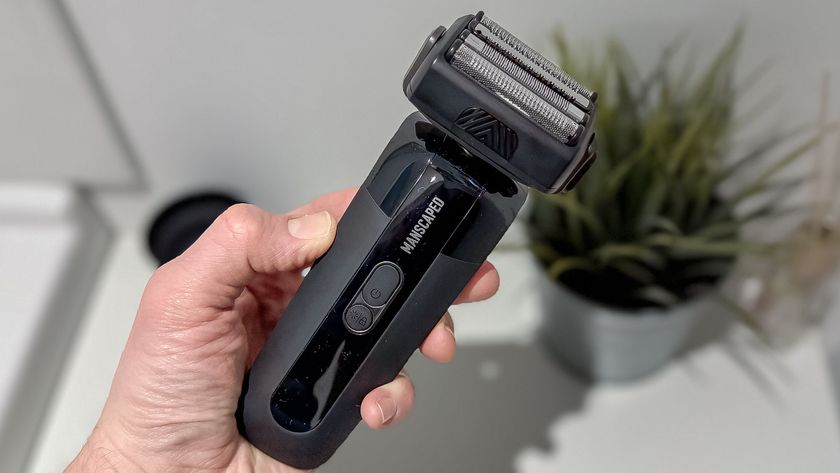Tom's Guide Verdict
The Vizio P-Series 65-Inch P65-F1 is one of the best TVs Vizio has ever made, delivering affordable quality to match more expensive competitors.
Pros
- +
Excellent picture quality
- +
Local dimming with 100-zone backlighting
- +
Antenna connection and tuner
Cons
- -
Limited local app support
- -
No voice assistant
Why you can trust Tom's Guide
The Vizio P-Series 65-Inch P65-F1 4K HDR Smart TV ($1,199) is part of Vizio's performance-focused model line, offering a step up from the midrange M-Series and the entry-level E-Series.
It does this with a focus on display quality, bolstering the 120-Hz panel with extensive HDR support and a backlight with 100 discrete dimming zones. Add an improved smart TV experience and an expanded feature set, and the Vizio P65-F1 starts looking pretty good, making it one of the best TVs available, especially for the price.
Editor's Note: (2/13/2020) If you've got the Vizio P-Series P65-F1, you're probably due to refresh the software. Check our guide to learn how to update your Vizio TV to the latest version of SmartCast.
Vizio P-Series 65-Inch P65-F1 Specs
| Price | $1,199.99 |
| Screen Size | 65 inches |
| Resolution | 3840 x 2160 |
| HDR | HDR10, HLG, Dolby Vision |
| Refresh Rate | 120 Hz |
| Ports | 5 HDMI, component video, composite video, USB |
| Audio | 2x 10 watt |
| Smart TV Software | SmartCast with built-in Chromecast |
| Size | 57 x 32.7 x 2.7 inches |
| Weight | 54.3 pounds |
Design
The 65-inch P65-F1 has a slim and elegant design that's trimmed with brushed metal along the bottom bezel. The P65-F1 rests upon two thin and delicate-looking metal stands at both ends of the TV.

Despite the delicate appearance, they are quite sturdy; they prevented the TV from wobbling better than the larger plastic stands we've seen on other TVs. Surrounding the display are thin, black bezels, including a black border beneath the edge-to-edge glass of the panel.

Without the stand, the TV measures 57 x 32.7 x 2.7 inches and weighs 54.3 pounds. The stand adds about 3 inches of height. The TV chassis is a little on the thick side, but it has a curved-edge design that still looks rather svelte.

The P65-F1 also accepts a standard 400 x 400-millimeter VESA mount for hanging the TV on the wall.
Ports
Perhaps the most important addition to this year's Vizio TVs is the return of the RF connector and built-in antenna tuner. Whereas past models relied on HDMI-connected cable or satellite boxes for most live content, this year's TVs will accept a coaxial connection that lets you connect an HD antenna for free over-the-air content.
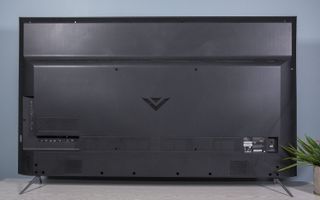
This may not sound like a big deal to most users, but it's a major feature for cord cutters who had previously been left in the cold by Vizio.

The TV is also pretty well outfitted with ports; it's equipped with five HDMI inputs (one with ARC support), combined component and composite video connections, digital audio (SPDIF) and a single USB port. An Ethernet port offers wired connectivity, while built-in 802.11ac Wi-Fi lets you stay connected without the cable.
Performance
The picture quality on the P65-F1 is very good, thanks to the 65-inch TV's 120Hz refresh rate and VA panel, which offers better contrast and brightness than you'll get from a comparable in-plane switching (IPS) panel. Vizio has also upped its game with improved backlighting and HDR support. The P65-F1 works with a range of HDR formats, including Dolby Vision, hybrid-log gamma (HLG) and the standard HDR10.

In Blade Runner 2049, the opening scenes of a darkened farmhouse were enhanced with tightly controlled backlighting. Brightly lit doorways and windows had very little unwanted haloing, and the shadowy details of the dark interior still showed rich detail. It was better in this respect than both the Samsung 65-inch Q6F QLED TV and the TCL 6 Series 65-inch Roku TV (65R617).
Vizio has also upped its game with improved backlighting and HDR support.
The P65-F1's LCD panel features a full-array backlight with local dimming, a technology that dramatically reduces unwanted haloing. About the only thing we've seen with better backlight was the much pricier LG 55-inch C7 OLED (OLED55C7P), which has per-pixel illumination and perfect black levels.
Color quality is also very good. In scenes from Spider-Man: Homecoming, the vibrant reds and blues of Spidey's suit looked very good (if slightly oversaturated), and glowing elements — like purple energy beams and a glowing jet covered in lights — looked rich and bright thanks to the HDR support.

The P65-F1 did have a narrower color gamut than most competitors, reproducing 99.58 percent of the sRGB spectrum. But that's only slightly lower than the scores from even the best competitors, like the Sony Bravia X900F (99.96 percent) and the LG C7 OLED (99.99 percent). All three are close enough to 100 percent to be on even footing in terms of what the naked eye can perceive.
Color accuracy was a slightly different story. When tested with our X-Rite colorimeter and CalMAN testing software, the P65-F1 had a Delta-E rating of 2.02 (closer to zero is better). While that's better than the LG C7 OLED (2.3) and significantly better than budget systems that have ratings of 5 or more, it's not quite as precise as the Sony X900F (1.26) or the TCL 6-Series (1.09). Specifically, the TV had some trouble with blues and reds, which looked slightly oversaturated.
In test screens of solid colors, the viewing angles were actually quite good, with no significant color shifting until we reached significant angles of 45 degrees or more. The backlighting was also quite consistent, though there were very minor shadows in the corners of the panel.
Audio
The P65-F1 has a pair of built-in 10-watt speakers, which offered room-filling volume and very good sound quality. Bill Evans Trio's "Autumn Leaves" highlighted the quality audio. The tones of the piano were pure, the drums and cymbals were crisp and sharp, and the bass line was clear.
The P65-F1 has a pair of built-in 10-watt speakers, which offer room-filling volume and very good sound quality.
When I played "Polaris" by Deadmau5, the audio was quite clear, even when cranked up to room-filling volume. Unfortunately, the song's complex bass line was muffled and muted due to the TV's lack of a subwoofer. The lack of bass was also felt in movies, where low rumbles and concussive explosions were markedly missing oomph.
Smart Features
For smart functions, Vizio uses its own SmartCast operating system, which has built-in Google Chromecast and offers a very simple interface. The home screen has one row of content recommendations and a single row of preinstalled apps. Whereas some competitors have several rows of apps and tiles you have to scroll through to access all entertainment options on the TV, Vizio's SmartCast platform has only those two.
Vizio SmartCast TVs rely heavily on built-in Google Chromecast for most apps and streaming. In the past, this meant you were essentially required to provide a phone or tablet to get the apps and services you wanted. While this approach did offer wide flexibility and let users access the wide variety of Chromecast-compatible apps, it also meant that, without a second device, you were largely out of luck.
One significant omission from the TV's feature set is any sort of voice control.
Thankfully, Vizio has improved upon this approach with a handful of locally installed apps. These 18 apps — including Amazon Prime Video, Hulu, Netflix, YouTube, Plex, Pluto TV, Vudu and Xumo — come preinstalled on the TV and are ready to go right out of the box. Unfortunately, these preinstalled apps are the only ones available without a second device. So although the new approach is significantly better, SmartCast TVs don't have the wide range of apps available for local installation that other smart TV platforms offer.
One significant omission from the TV's feature set is any sort of voice control. Many sets from Sony, Samsung, LG and others incorporate voice interaction for content search, functional controls and basic informational search. Even budget-friendly Roku TVs, which may not have microphones built into their remote controls, still offer voice search through the Roku app. Vizio, on the other hand, has no built-in voice option. If voice assistants like Google Home and Amazon Alexa don't particularly appeal to you, this may not be a problem, but it is a significant difference from the majority of competing models.
MORE: Best Smart TVs - The Best 4K and HD Televisions for the Money
That said, there is a way to get voice interaction on your Vizio TV. But this is another instance in which Vizio has opted to offload functionality to an external device. Our review unit came with an Amazon Echo Dot, and Vizio SmartCast TVs are compatible with Alexa-enabled and Google Home products. These devices are not always provided with the TV and require a separate setup to be paired with the TV.
Remote Control
Vizio's remote controls are a mixed bag. A year or two back, the company tried to switch entirely to smartphones and tablets, again relying on Google Chromecast and connected apps, but many people found that they still wanted a standard remote. So the company reintroduced the remote, with a slim design that sets the buttons flush with the surface and offers all of the expected channel and navigation controls.
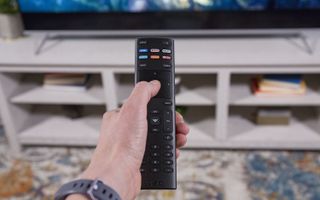
The Vizio smart TV remote is functional, and rather comfortable to hold, but I dislike the layout and design of the buttons. Specifically, I don't like the large, square directional pad that is used to navigate the various apps and menus. The surface of this large, square pad is largely undifferentiated from the rest of the remote, making it difficult to tell what you're pressing and when.
Bottom Line
Vizio has really stepped up its game this year, directly addressing complaints we had about past models, like a lack of local app support and the omission of an RF tuner. Going even further, Vizio outfitted the $1,199 P-Series 65-inch model with an impressive number of HDMI ports and a superb full-array local-dimming backlight. Combine all of these features with a high-quality display and excellent sound, and the P65-F1 is easily the best Vizio TV we've reviewed.
More important, the P-Series is nearly on a par with some top competitors that cost hundreds more, like the Sony Bravia XBR-X900F and the Samsung 65-inch Q6F QLED. The Vizio does lack a built-in voice assistant, and still has limited support for local apps, but these are small faults that many users will be able to live with.
Credit: Tom's Guide
Brian Westover is currently Lead Analyst, PCs and Hardware at PCMag. Until recently, however, he was Senior Editor at Tom's Guide, where he led the site's TV coverage for several years, reviewing scores of sets and writing about everything from 8K to HDR to HDMI 2.1. He also put his computing knowledge to good use by reviewing many PCs and Mac devices, and also led our router and home networking coverage. Prior to joining Tom's Guide, he wrote for TopTenReviews and PCMag.
